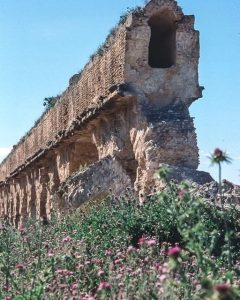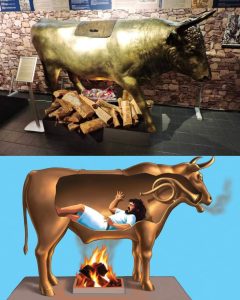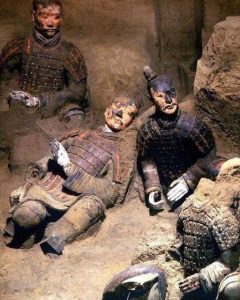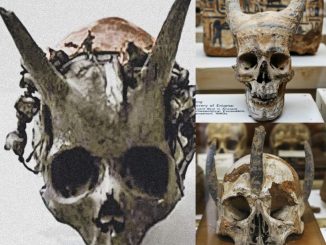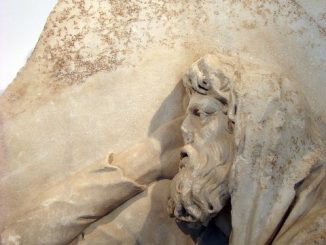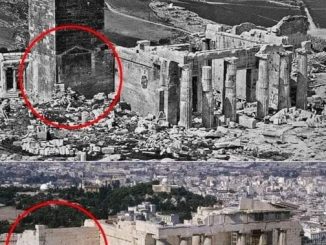Nestled amidst the rugged terrain of Samos, Greece, lies a testament to ancient engineering prowess – The Eupalinian Aqueduct. Dating back to the 6th century BC, this remarkable tunnel, stretching 1,036 meters through Mount Kastro, stands as a monument to the ingenuity and innovation of its creators. As we delve into the depths of history, let us uncover the mysteries and marvels of this ancient aqueduct, renowned as the second known tunnel excavated from both ends and the first to employ a geometry-based approach.
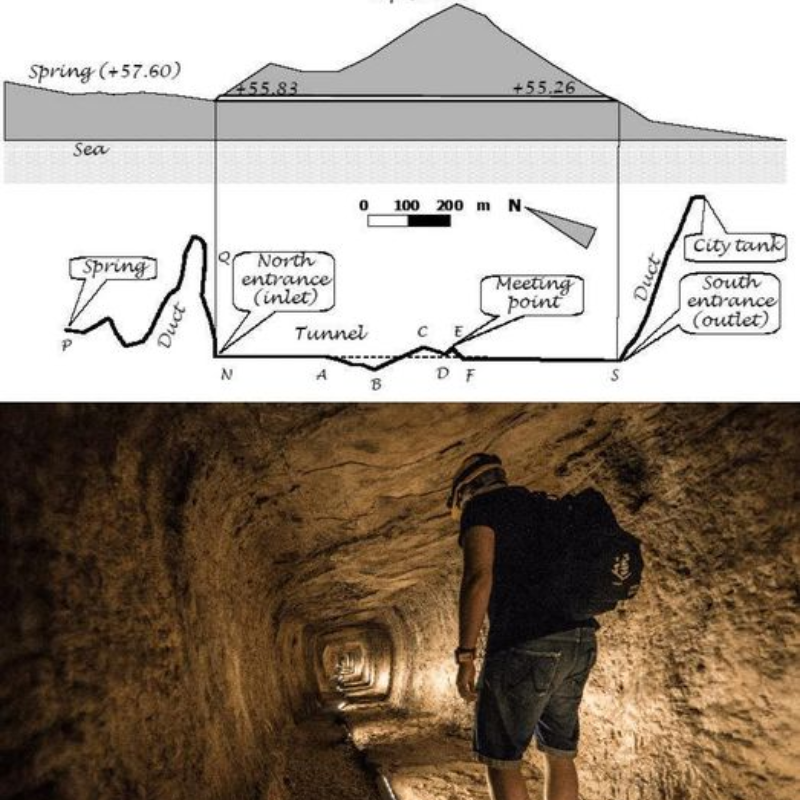
A Feat of Ancient Engineering
Constructed during the reign of the tyrant Polycrates, The Eupalinian Aqueduct represents a monumental achievement in ancient engineering. Carved through solid limestone, the tunnel was meticulously designed to transport water from the Agiades spring to the ancient city of Samos, ensuring a reliable water supply for its inhabitants. Despite the absence of modern technology, ancient engineers utilized innovative techniques and mathematical principles to navigate the challenging terrain and create this subterranean masterpiece.
Dual Excavation
What sets The Eupalinian Aqueduct apart from its contemporaries is its unique method of construction. Unlike previous tunnels, which were excavated from a single entrance, The Eupalinian Aqueduct was dug simultaneously from both ends, meeting in the middle with remarkable precision. This dual excavation approach not only expedited the construction process but also ensured greater accuracy in alignment, a testament to the advanced engineering techniques employed by ancient craftsmen.
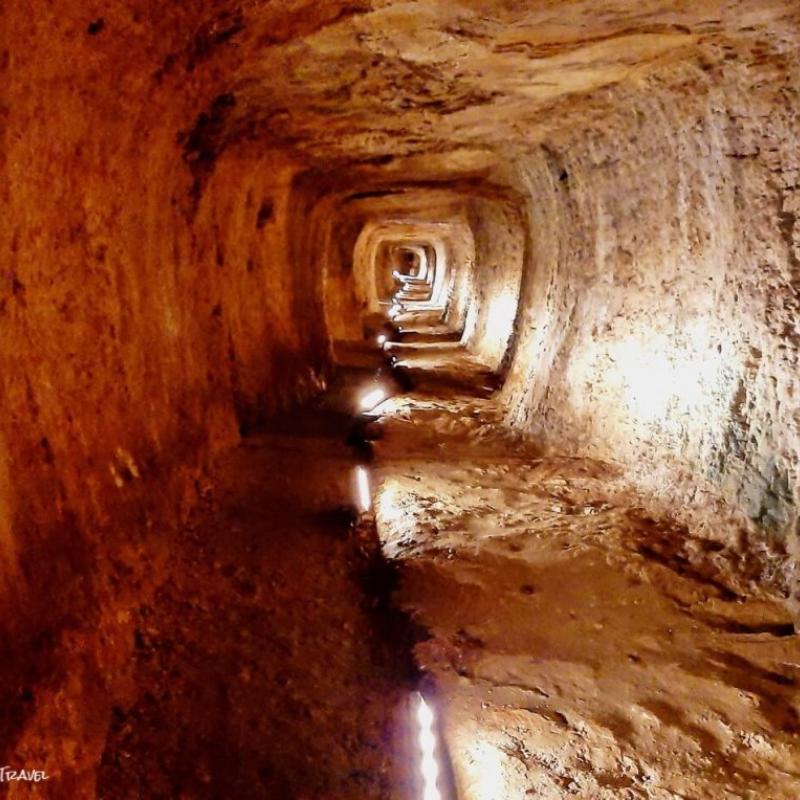
Geometry-Based Approach
One of the most remarkable aspects of The Eupalinian Aqueduct is its utilization of a geometry-based approach to excavation. Rather than relying solely on trial and error, ancient engineers employed geometric principles to ensure the alignment and symmetry of the tunnel. By calculating angles and distances with remarkable accuracy, they were able to achieve a level of precision previously unseen in tunnel construction, laying the groundwork for future advancements in engineering and architecture.
Enduring Legacy
Despite millennia of wear and tear, The Eupalinian Aqueduct continues to stand as a testament to the ingenuity and resourcefulness of its creators. Its enduring legacy extends beyond its functional purpose, serving as a symbol of ancient Greece’s technological prowess and cultural achievements. Recognized as a UNESCO World Heritage Site, the aqueduct attracts visitors from around the globe, offering a glimpse into the rich history and engineering marvels of antiquity.
Inspiration for the Future
As we marvel at the engineering marvel of The Eupalinian Aqueduct, we are reminded of the timeless lessons it offers for future generations. Its innovative construction techniques and meticulous attention to detail serve as an inspiration for modern engineers and architects, highlighting the importance of ingenuity, perseverance, and interdisciplinary collaboration in tackling complex challenges. In an age of rapid technological advancement, The Eupalinian Aqueduct stands as a poignant reminder of the enduring legacy of ancient wisdom and the boundless possibilities of human innovation.
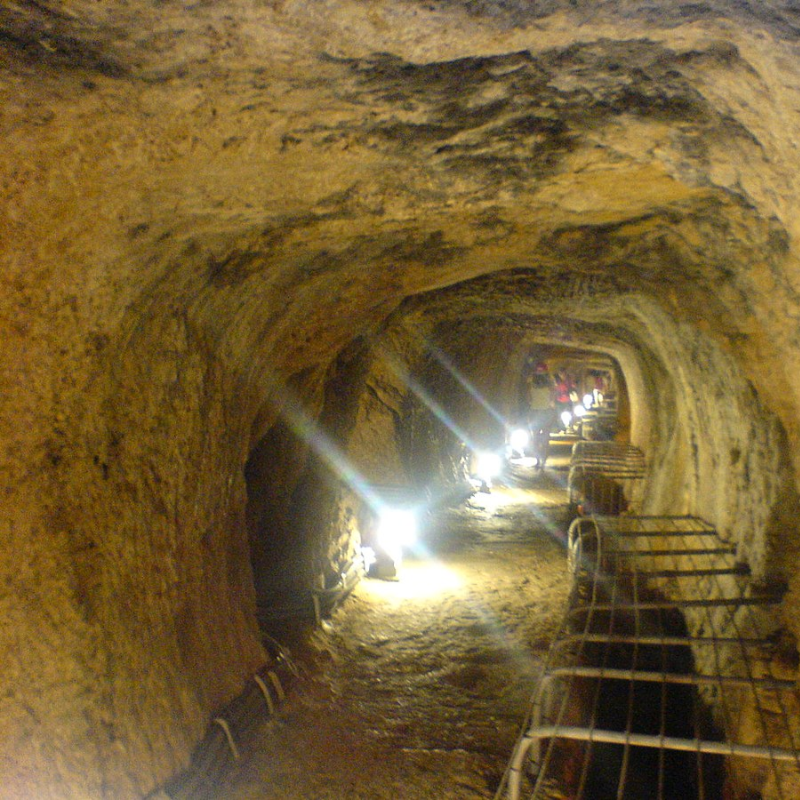
Conclusion
In conclusion, The Eupalinian Aqueduct stands as a testament to the ingenuity, innovation, and perseverance of ancient engineers. From its remarkable construction techniques to its enduring legacy as a cultural landmark, this ancient marvel continues to captivate and inspire all who encounter it. As we reflect on its significance as the second known tunnel excavated from both ends and the first to utilize a geometry-based approach, let us celebrate the remarkable achievements of our ancestors and draw inspiration from their timeless wisdom and ingenuity.
